CESNI meeting on 06 July 2017
06/07/2017
 Strasbourg, 06 July 2017 – The European Committee for drawing up Standards in the field of Inland Navigation (CESNI) met in Strasbourg on Thursday 6 July 2017; the meeting was chaired by Mr Max Nilles, the representative of the Grand Duchy of Luxembourg. Taking part in the discussions were thirteen Member States as well as the European Commission, the Moselle Commission and the Sava Commissions, and also organisations approved by CESNI.
Strasbourg, 06 July 2017 – The European Committee for drawing up Standards in the field of Inland Navigation (CESNI) met in Strasbourg on Thursday 6 July 2017; the meeting was chaired by Mr Max Nilles, the representative of the Grand Duchy of Luxembourg. Taking part in the discussions were thirteen Member States as well as the European Commission, the Moselle Commission and the Sava Commissions, and also organisations approved by CESNI.
Adoption of ES-TRIN 2017/1
The Committee adopted the new European standard laying down technical requirements for inland navigation vessels ES TRIN 2017, which replaces the 2015 edition. The amendments concern the following areas in particular:
– emission of gaseous and particulate pollutants from internal combustion engines (adaptation of ES-TRIN to European Union regulations),
– electrical equipment and installations (Chapter 10),
– traditional craft (Chapter 24).
ES-TRIN is not binding per se. The Central Commission for the Navigation of the Rhine, the European Union, other international organisations or third countries can apply this standard by referring to it in their respective legal frameworks.
The CCNR and EU intend to enact ES-TRIN 2017/1 in a coordinated way, with effect from 07 October 2018, by means of a reference in their respective legislative frameworks.
Adoption of the test Standard for Inland AIS 2017/2.0
At its meeting on 06 July, the Committee also adopted the test Standard for Inland AIS, which defines the minimum operational and performance requirements as well as the methods of testing and required test results for Inland AIS equipment.
The Automatic Identification System (AIS) was initially developed for maritime navigation by the International Maritime Organization (IMO).
To address the specific requirements of inland navigation, the AIS system was modified as the “Vessel Tracking and Tracing Standard for Inland Navigation” (VTT Standard), while maintaining complete compatibility with the IMO’s maritime AIS and with the existing inland navigation standards.
In addition to the aforementioned VTT Standard, there appears to be a requirement for a harmonised definition of the minimum operational and performance requirements, methods of testing and required test results for Inland AIS shipborne stations.
The test Standard for Inland AIS adopted by CESNI satisfies this requirement and is fully consistent with the framework established by the ES-TRIN. Indeed, a reference is made to this standard in article 1.01 (7.11) of the ES-TRIN.
To improve the navigational safety of the Rhine, the CCNR made it mandatory to possess an Inland AIS station with effect from 01 December 2014.
The technical content is identical with that in Inland AIS Test Standard Edition 2.0 of CCNR Resolution 2012-II-20 dated 29 November, 2012. This is why this standard is published as edition 2.0.
Granting of observer status to the Republic of Serbia
The Committee unanimously welcomed the request by the Republic of Serbia to gain observer status with CESNI. In a spirit of openness to all participants in the field of European inland navigation, the Committee had clarified the procedure for granting this status last March. Observer status enables any non-Member State of the European Union or Central Commission for the Navigation of the Rhine to take part in meetings of the Committee and its working groups.
The Republic of Serbia’s excellence and expertise in inland navigation matters will add precious value to CESNI’s activities. As a member of the Danube and Sava Commissions, and of the United Nations Economic Commission for Europe (UN-ECE), the Republic of Serbia had already displayed an interest in a common international rules governing inland navigation as long ago as 2001, when it had obtained observer status with the CCNR.
The Committee welcomed this first recognition of observer status, which will open the door to recognising other third party States in the near future.
Standards for professional qualifications
The Committee noted with satisfaction the informal agreement on the directive on the recognition of professional qualifications concluded between the Council, the European Parliament and the European Commission on 27 June 2017. The CESNI standards currently being drafted will need to take account of the outcome of this informal agreement.
The Committee reviewed the work currently in progress in the professional qualifications arena.
The permanent working group on Professional Qualifications met last May in the Danube Commission’s offices in Budapest to examine the initial draft standards on competencies developed as part of the draft European directive (EU) on the recognition of professional qualifications in the field of inland navigation.
Concerning medical standards, the expert group met in Strasbourg on the afternoon of 06 July. The aim of this meeting was to examine the comments received on the first draft standard on the medical aptitude criteria for deck crew members in inland navigation. In addition to the member states and international organisations, the national ophthalmology organisations and experts responsible for the medical examinations of deck crew members were consulted as well, enabling the standards to be brought into close alignment with the situation on the ground.
Finally, the temporary working group on simulator standards met in Duisburg, Germany, in June 2017. The Committee welcomes the agreement reached between the experts on the technical requirements applicable to vessel handling simulators. The temporary working group will now devote itself to identifying the test standards for the technical requirements as a whole. The next meeting will take place in Harlingen in the Netherlands on 12 and 13 September 2017.

